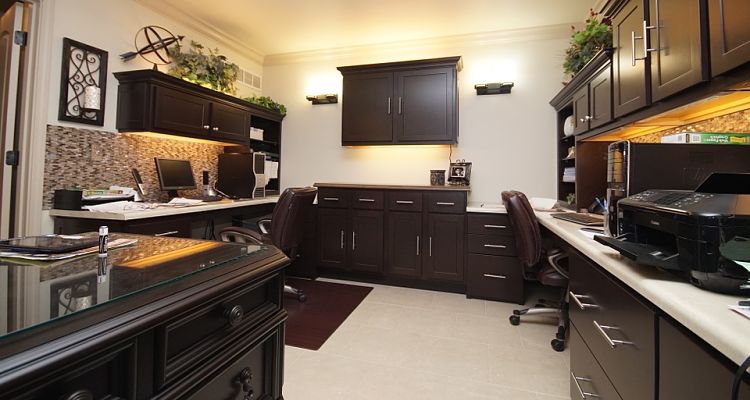
Unless you’re an expert mover, you’ve probably struggled to move heavy cabinets or other large furniture. Moving heavy furniture and packed boxes can strain your back and knees. You could even damage the furniture while attempting to move it.
Armoires and cabinets are indeed attention-getters, but the beauty of this decorative furniture can suddenly be diminished, especially as moving day draws near. It’s the type of cumbersome furniture that one would rather leave behind if it were not for its effective storage qualities. Plus, relocating with this type of furniture can be a great challenge. Here are a few ways to easily move armoires and cabinets without fuss or stress.
Can You Move Cabinets by Yourself?
Remove Whatever You Can
One of the first things to do is remove the items packed into the armoire and cabinet and place them in boxes for moving. If they are fragile items, such as porcelain ornaments, be sure to wrap them in bubble wrap a few times before gently placing them in the box. When it comes to your cabinet, it would be wise to remove the shelves (if they are indeed removable) and put them aside.
These shelves should be placed in another part of the moving truck, since you do not want them to slide out and damage other items in the vehicle. You should also consider removing the doors of the cabinets; a rough drive can cause them to catapult to God knows where in the back of the truck.
There are some that may have armoires and even cabinets that have glass doors; these can be very tricky to move. When you reach this part, you can either hire professional movers to assist you if you think you might make a mess of it, or use a moving blanket over the area, as it is designed to protect fragile items such as these.
Remove Drawers
We also recommend that you remove the drawers in the cabinet or armoire rather than taping them to stay sturdy. By taking it, you would be giving yourself an extra headache, as the tape is often challenging to remove and can ultimately damage your furniture.
Another option for holding the drawers and doors in place is to get them shrink-wrapped. Shrink wrapping an item, such as this, is a tedious job, but it’s worth it, especially when you’re trying to protect items like these.
If you want to remove the doors and drawers instead, one of the first things to do is to remove the screws and set them aside in a Ziplock bag, labeling them so that you can locate them easily when you move. Once that is completed and set aside, it is time to remove the drawers and doors, which should also be wrapped in moving blankets.
Protect Furniture During The Move
Despite our best efforts, carrying large pieces of furniture occasionally makes us clumsier. A desk could crash against the wall if you lose your footing while descending the stairs. Damage can be avoided by putting something between the object you’re transporting and any nearby objects.
Move It The Right Way
Don’t hesitate to push big furniture instead of lifting it, because pushing is far gentler on your body than pulling. Additionally, pulling typically results in more back discomfort than pushing. Instead, place a cardboard or an old sheet under the furniture and use it to drag them across the floor.
The floor will be protected from scratches by adding a carpet or other covering underneath the object, which will also make pushing it easier.
Quick and Easy Methods
One effective technique is to use furniture sliders. These simple tools fit under the cabinet’s corners, allowing you to glide the heavy piece across the floor smoothly. This method not only protects your back but also protects your floors from scratches and damage.
Another essential tool is the furniture dolly. Positioned under one end of the cabinet, it lets you tilt and roll the piece rather than carrying it, which can be particularly useful when navigating through doorways or over uneven surfaces. Additionally, hiring a helper or two can provide the necessary support to maneuver the cabinet more strategically, ensuring safety and efficiency.
Beyond the typical dollies and sliders, professional movers often use shoulder dollies. These lifting straps, which go over your shoulders, allow for a hands-free approach that significantly reduces the risk of back injuries.
Navigating Different Scenarios
When moving large cabinets, you may wonder how to navigate challenges such as doorways, stairs, or uneven flooring. Here’s a step-by-step guide to help you handle these situations more easily.
1. Moving Cabinets Through Doorways
• Measure First: Before you start, measure both the cabinet and the doorway to ensure a clear passage. It’s frustrating to get halfway through a move only to find the cabinet won’t fit.
• Angle and Tilt: Sometimes, tilting the cabinet can provide the few extra inches needed to clear the frame. Try different angles to find the best fit.
• Remove Obstacles: If possible, remove the door from its hinges for extra space. This is a quick task that can make a significant difference.
2. Navigating Cabinets Up/Down Stairs
• Plan Your Path: Visualize and clear your route before lifting. Obstacles on stairs can be dangerous.
• Use Lifting Straps: Lifting straps can help redistribute the weight of the cabinet, reducing strain on your back. Ensure you and your helper are comfortable and have a firm grip.
• Step Slowly: Take it one step at a time to maintain balance and control. Rushing can lead to slips or damage to the cabinet.
3. Moving Over Different Floor Surfaces
• Hard Floors: Use felt pads or sliders under the cabinet corners. These allow you to glide the cabinet across without scratching the floor.
• Carpets: Rolling is tougher on carpet. Consider using a plywood pathway to ease the move and prevent snagging.
• Uneven Surfaces: For transitions between different types of flooring, use a portable ramp or a sturdy mat to smooth the path.
Protecting Floors and Walls From Scratches
To ensure your floors and walls remain pristine when moving large cabinets, consider these additional protective strategies that complement and build upon the general moving advice.
1. Use Adhesive Carpet Films:
- For carpeted areas, roll out adhesive carpet films before the move to ensure a smooth transition. These films stick to the carpet, creating a protective shield against dirt, spills, and minor abrasions without leaving a sticky residue.
2. Use Door Jamb Protectors:
- Fit these padded protectors around your door frames. They are designed to cushion the impact against the woodwork, protecting both the door frames and the edges of your furniture as you maneuver through tight spaces.
3. Implement Rigid Floor Runners:
- Unlike corrugated cardboard, rigid floor runners offer a more durable solution for protecting hard flooring surfaces. Made from hard plastic, these runners provide a firm path that supports the weight of heavy furniture without slipping.
4. Plywood Panels:
- For extremely heavy items, consider laying down plywood panels over your floors. These panels distribute the weight more evenly than individual sliders, reducing the risk of damage to softwood floors or tiles.
5. Reinforce Corners with Bubble Wrap:
- Protect the vulnerable corners of your cabinets and the intersecting walls by wrapping them in bubble wrap. This adds an extra layer of cushioning, which can absorb shocks and prevent chips or scratches during bumps.
How To Secure a Large Cabinet in a Moving Truck
-
Position the Cabinet: Place the cabinet against the wall of the truck closest to the cab. This location helps stabilize the cabinet with the truck’s movement.
-
Use Ratchet Straps: Secure the cabinet with ratchet straps for added stability. Attach one strap around the top third of the cabinet and another around the bottom third of the cabinet. Tighten the straps to the side rails of the truck’s interior, ensuring the cabinet is snug against the wall.
-
Add Padding: Place moving blankets or foam between the cabinet and the wall, as well as between the cabinet and any nearby items. This padding prevents damage from vibrations or shifts during transport.
-
Block Movement: Use large, sturdy items, such as mattresses or box springs, to block the cabinet from both the front and back. This additional bracing limits any forward or backward movement.
-
Check Stability: Before starting your journey, double-check that the cabinet does not shift easily when nudged. Adjust the straps and padding as necessary to improve stability.




Thanks for the information. I am planing to move another place . I keep in mind these all things when i relocate my furniture.
This is a very helpful tip indeed. Sometimes we just move our furnitures by just simply lifting it or even dragging it from one place to another, especially when we decide to move into a new home. When this happens, we usually or may forget to take care of our expensive armoires and cabinets. It’s really nice that you’ve provided helpful tips to take care of our furniture. It’s very important that we know how to move them properly from one place to another. Great tips and techniques. A must read. Thanks!